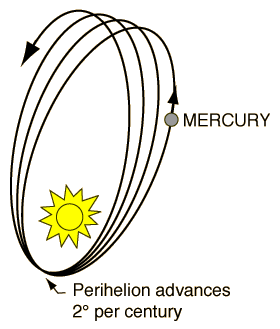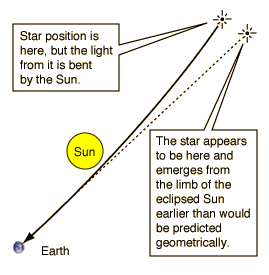Advance of Mercury's Perihelion
 |
The perihelion of the orbit of the planet Mercury advances 2 degrees per century. 80 seconds of that advance was accounted for by perturbations from the other planets, etc., but the last 40 seconds of arc were unaccounted for. General relativity predicts an additional 43 seconds of arc and was one of the first triumphs of Einstein's theory. The eccentricity of Mercury's orbit is exaggerated here to emphasize the effect. More numerical detail |
General relativity ideas
Reference Ohanian
| HyperPhysics***** Relativity | R Nave |
